Today Specialized has finally announced their new power meter crankset, aptly called Power Cranks. This crankset has been in the works for quite some time, both in rumors as well as on pro team riders bikes (as I showed at the Tour Down Under). The unit is offered not just on Specialized bikes, but also as a product you can buy like any other power meter. Both in a dual-sided version as well as a single-sided variant. And both in carbon as well as non-carbon options.
Now Specialized wasn’t entirely alone in this venture, in fact as the inside of the battery compartment alludes to – Specialized enlisted 4iiii for much of the underlying power meter technology. But it’s actually not a simple re-branded 4iiii Precision power meter. In fact there are numerous internal and external differences that are unique to the offering from Specialized. But fear not, we’ll get into all those details down below.
Note that as usual I’ll be sending back the two bikes and one standalone power meter that Specialized sent over for me to put through their paces. That’s just the way I roll. With that, let’s dive right into it.
Unboxing:
There are basically two ways you can get the Specialized Power Cranks. The first (and most expensive) option is to simply buy a new bike with it equipped. No installation required. The second (and far more reasonable) option is to buy the boxed variant as an aftermarket accessory. Note, there’s no specific requirement for a Specialized bike, as I’ll show you in a bit.
Starting with that first option, you can go for broke with something like the new S-Works Tarmac SL6 Disc, which was also announced today. This particular bike is spec’d out with all sorts of bling including Shimano Di2 and disc brakes, and some sort of rolling thingies that cost more than my entire family’s return plane tickets to Australia ($11,000 for the SL6 to be precise). Speaking of which, if you want to increase the price of this scenario, request that the review unit be shipped to Australia…preferably on the least close coast to California.
And, for those bike geeks out there, here’s the full setup for how this bike is configured, minus the pedals which I added – another power meter, the Favero Assioma dual-sided units.
While undoubtedly many of you will want me to ‘review’ this bike, that’s not really my thing (see James Huang’s review of the bike aspect). I’m a simplistic person when it comes to bikes, as long as it feels fast despite however many cookies I eat, I’m happy. Also, it should stop when I use the brakes. This bike achieved both. Nonetheless, here’s a gallery of cookie-friendly goodness I shot:
Now, back to that less expensive option – just buying the power meter itself. In this case, you get a box almost identical in size/shape to that of the Garmin Vector 3 box. It’s even black. But of course, there’s no similarities in what you’ll find inside.
Once you crack it open you’ll have some brightly colored paper stuffs looking up at you. That’s the manuals and safety junk. Then below that you’ll find the crankset. Note that it lacks any chainrings – so you’ll need to figure that out yourself (don’t worry, it’s easy).
Here’s a closer look at the two crank arms. Each has their own power sensor on it – hence the ‘dual’ part. Whereas Specialized also makes a left-only variant that’s the single option.
Then there’s a small box of parts, that box contains a plastic bag which actually has more bags of parts in it. It’s like one of those Russian stacking dolls. Here’s all those parts, which are largely spacers and bolts to attach the chainrings to your crankset.
And then there’s a battery cap removal tool. But more on that a bit later.
In my case, my secondary bike was already tied up with another power meter review (Shimano R9100P), so I couldn’t quite swap everything out too easily since the bottom bracket types were different. Thus I largely just used the bike that was shipped to me…since that was prettier.
(Fun tidbit: This is actually the second bike equipped with a Specialized power meter that I complexingly had them ship to me elsewhere in the world. The first was last June, to France. You didn’t realize it at the time, but that ‘rental bike’ as per my Strava listing was a bit more special than that. You just couldn’t tell a special…ized, power meter was on there.)
General Use Overview:
Now before we go too much further, it’s important (like, really important) to point out one interesting tidbit: Specialized didn’t make this unit entirely by themselves. Nope, instead they enlisted the help of 4iiii, who has been making power meters for a couple of years now (respectable ones at that). But that doesn’t mean the Specialized variant is just a simple rebrand of the 4iiii Precision. There are actually some notable differences, mainly externally focused – but also some key important internal differences with respect to strain gauge design. The first piece you’ll notice is the battery cap situation, which is quite different than the 4iiii Precision (either Pro or Podium), which has a much smaller pod than the Specialized variant.
Why, you ask?
Well, Specialized wanted to improve the waterproofing aspects a bit more and bring it to a higher waterproofing standard than the existing 4iiii Precision units. So they went with a system that requires removal of two screws (using a hex wrench) to access the CR2032 coin cell batteries (which are set to last 125-150 hours each). The main driver for this increased waterproofing standard was to allow teams to more comfortably use pressure washers with the power meters (because let’s be honest, they already do on the two team’s that use/used 4iiii’s Precision units over the past 2-3 seasons):
Now, there’s one downside to this new battery compartment: It’s a pain in the ass to change. Sure, it’s silly simple if you have the included tool – but it’s a long-affair if you don’t have the super long and tiny hex wrench to get that close to the downtube in a rather awkward spot. It’s not something you want to forget on a road trip:
Sure, it’s possible to do without the tool (been there, done that), but it’ll take you forever with a bike tool since you can only complete half a rotation with each twist. On the flip side, at least it’s well waterproofed. I used the first test bike with this design through plenty of rain and crappy weather in Paris last year, and it’s still alive.
The second notable change to the 4iiii design is internal – and totally not visible. They re-arranged the strain gauge design/pattern (which they declined to get into the details of, as expected) to get slightly better accuracy on carbon crank arms. As any power meter company will tell you – getting repeatable and accurate results on carbon crank arms is incredibly difficult, in large part because every carbon crank arm off the assembly line is slightly different (not just model to model, but each individual unit coming off the line). They also tend to age over time slightly different as well.
Now, Specialized appears to have gone a bit further along in the accuracy claims backing department than most power meter companies. They went to the University of Colorado Boulder’s Locomotion Lab to have them put together independent verification of the power meter accuracy claims. Of course, obviously, Specialized is funding some of that occurring, though after listening/watching/discussion via web conference the non-Specialized scientists involved in the testing, I’m reasonably confident we aren’t seeing any funny business there.
What might be funny is how out of the box the design is for validating the power meter. In large part because it doesn’t depend on using another power meter to validate. Instead, it’s math based with an incredible amount of energy spent on covering the bases for details like measuring sweat loss. In a nutshell, the university built a custom treadmill that allows them to measure rolling resistance, drivetrain loss, even spoke resistance by using known weights and the resistance pulled on the weights.
About 5-10 minutes into this presentation after they had presented the man in charge (Dr. Rodger Kram) – his Harvard backed credentials and peer-reviewed papers and the general overview – my alarm bells were starting going off. In large part because the vast majority of very smart academics usually really screw up power meter testing. Mostly because they don’t understand the nuances of the technology itself, or where things could go wrong on test setup. So, I casually started to wade into these nuances, which included (paraphrased below):
DCR Question: How do you account for the rolling resistance of the treadmill relative to the drivetrain loss of crank arm measurement?
Dr. Kram’s Answer: We invert the power equation using a known drivetrain loss value, in this case – 1.02%.
DCR: Most power meters today tend to have issues with temp shifting scenarios, did you test for that?
Dr: Glad you asked, first, we got a crapton of ball bearings, and then we heated them to 50°C. We validated the temperature with an infrared thermometer. Then we moved them to a larger cooler where we submerged the crankset into the cooler to have it reach the 50°C (122°F) temp. Then we quickly attached to the bike. We found initially the power was 4.1% low, but within 10 minutes it was within 1.7%.
DCR: Ok, a cooler is kinda impressive. But what about cold?
Dr.: We did the inverse, this time putting them in a freezer validated at 0°C, after temp stabilization we installed crankset in under 2 minutes and then found power was also within 2% within 10 minutes. There were no manual zero offsets.
DCR: Any testing of cross-chaining?
Dr.: Yes, we did full cross-chaining sweeps from biggest cog to smallest cog, and while I’m at it we also did full cadence tests from 50RPM to 114RPM. The power didn’t vary more than 2% across the entire cassette.
DCR: What about vibrations, that’s really the second area that power meters struggle with?
Dr.: We couldn’t test that on this treadmill design, but we have some specific ideas on how to test that down the road with designing a new treadmill.
This sort of discussion went back and forth for about an hour as they walked through the testing methodology including aspects like how many units they tested (6 unique units), as well as the differences between the various prototype iterations (earlier prototypes saw a worst case scenario 2.2% during standing sprints). Or that they also tested pedal spacers.
The part that I appreciated in talking to Dr. Kram was simply that he was refreshingly honest. When there was a gap in the methodology (like vibration testing), he noted it. He also made a reasonably good point in that he doesn’t actually get paid anymore as an emeritus professor, instead, the funding from Specialized goes to the lab itself. He noted that “I’d be pretty damn stupid to stake my career and reputation to be a shill for one company”, and instead wanted it really to be “more about the method”, and said they were definitely looking at ways to document the method in more detail allowing other entities (universities or otherwise) to duplicate it.
In any case, I’ll dive into more of the accuracy pieces from my perspective down below. For now, we’ll leave that massive diversion about differing strain gauge design and get back to some basics.
When we look at the power meter from a pairing standpoint, it transmits both ANT+ & Bluetooth Smart, just like virtually every other power meter on the market today. So when searching from a head unit you’ll find it listed both as an ANT+ unit and a Bluetooth Smart unit. As a general rule of thumb for power meters, you’ll want to use ANT+ instead of Bluetooth Smart, since usually compatibility works better.
It transmits both power and cadence, as well as additional metrics in certain cases. Here’s the total listing:
ANT+ Power (total)
ANT+ Power Balance (left/right)
ANT+ Cadence
Bluetooth Smart Power
Bluetooth Smart Power Balance
Bluetooth Smart Cadence
In addition, by tomorrow they’ll be adding in ANT+ Pedal Smoothness & ANT+ Torque Effectiveness via firmware update. Since these aren’t enabled yet on my unit, I can’t speak to their accuracy yet. But given that 4iiii has had these metrics for a while and they were fine there, this is really more just of a firmware enablement of a well-understood feature than anything else.
Speaking of head unit goodness, you’ll trigger a calibration just like you would other power meters by going into the ‘Calibration’ comment on your head unit.
Like the 4iiii units, the Specialized units reads back identical status codes during calibration, which display the two sides (left + right) as a single four digit number
10 – Good, ready to ride
20 – Unstable data (bike not stationary)
30 – Low battery (less than 10%)
50 – Calibration error – contact support
99 – Power meter side not found
0 – Power meter not found
So basically: 1010 as seen above is ‘Good’ on both crank arms. The positive side to this is that it’s far easier for most people to understand. The downside is that it can make tracking calibration/drift variances harder since you’re not given a specific zero offset.
In addition, you can also use the newly published Specialized Power Cranks mobile app, which will connect to your Power Cranks via Bluetooth Smart and allow you to check various settings and status information.
For example, I can pull open the status of either side of the crank set. And if you had bought a single-sided unit, there’s the option to upgrade to a dual-sided unit.
You can also perform a zero offset there as well.
For the most part the app has aspects that mirror the 4iiii app, and indeed you can even use the 4iiii app too if you so desire – though honestly the Specialized app looks prettier. Beyond what I’ve outlined above, the setup and configuration is all pretty straightforward.
Power Meter Accuracy Results:
I’ve long said that if your power meter isn’t accurate, then there’s no point in spending money on one. Strava can give you estimated power that’s ‘close enough’ for free, so if you’re gonna spend money on something it shouldn’t be a random number generator. Yet there are certain scenarios/products where a power meter may be less accurate than others, or perhaps it’s got known edge cases that don’t work. Neither product type is bad – but you just need to know what those use/edge cases are and whether it fits your budget or requirements.
As always, I set out to find that out. In power meters today one of the biggest challenges is outdoor conditions. Generally speaking, indoor conditions are pretty easy to handle, but I still start there nonetheless. It allows me to dig into areas like low and high cadence, as well as just how clean numbers are at steady-state power outputs. Whereas outdoors allows me to look into water ingest concerns, temperature and humidity variations, and the all-important road surface aspects (e.g. vibrations). For reference, Specialized has a claimed accuracy rate of +/- 1.5%. It also does not require any magnets for cadence, while also automatically correcting for any temperature drift. Both of these are pretty common though on most power meters these days.
(Updated note: Earlier press materials quoted +/- 1.0%, but Specialized says that was an error and should have stated +/- 1.5%.)
In my testing, I generally use between 2-4 other power meters on the bike at once. I find this is the best way to validate power meters in real-world conditions. In the case of most of these tests with the Specialized I was using these other power meters concurrently:
Favero Assioma Pedals
Garmin Vector 3 Pedals
JetBlack WhisperDrive Smart Trainer
Wahoo KICKR 2017/V3 Trainer
Typically I like to also use a PowerTap G3 hub on my bikes, but in this case I don’t actually have a disc PowerTap hub wheelset yet, so I had to skip that 3rd concurrent unit (since the bike I received has disc brakes).
Now in actuality, I also used it with other power meters/trainers too, back on previous beta units on a non-disc equipped bike, these included:
Tacx NEO Trainer
Elite Direto Trainer
PowerTap G3 Hub
PowerTap P1 Pedals
However, for the purposes of the accuracy section here, I’ll just focus on the most recent production version. Though honestly, my data from all the way back last summer was perfectly fine for me too.
In general, my use of other products is most often tied to other things I’m testing. Also, when it comes to data collection, I use a blend of the NPE WASP data collection devices, and a fleet of Garmin head units (mostly Edge 520/820/1000/1030 units). For the vast majority of tests on the Specialized units I used an Edge 1030 and Edge 520.
Note all of the data can be found in the links next to each review. Also, at the end is a short table with the data used in this review. I’ll likely add in other data not in this review as well.
First, let’s start indoors with a Zwift session from a few weeks ago on Zwift. In both cases though I’m recording the data via head units to keep the playing field straightforward for data consistency. Here’s the DCR Analyzer link for this set if you want to dive in more deeply.
What you see above is that all three units tracked very closely, though there was a tiny bit of separation mostly from the Favero Assioma pedals. This was actually the first ride these pedals had been put on the bike. And while I did do a bunch of sprints/etc before starting the ride, sometimes you still see a settling period. Still, ignoring that slight offset there, things are very close. Especially if we look into the sprint a bit later in the file.
The above is smoothed at 10-seconds just to keep things easier to view above, but you can see all three track through the sprint quite well. Even if I turn off smoothing and just look at the 1-second power for the sprint, they’re all very close. Getting any set of power meters to match 1-second power values for a sprint is virtually impossible, primarily due to the different recording and transmission rates of head units and power meters.
Also of note is that if I look at the breakouts of left and right power from both dual-sided units (Favero Assioma and Specialized Power Cranks), you’ll notice they roughly mirror each other in terms of which side I have higher balance on.
And if I look at the cadence on this ride, they’re virtually identical between the two units (the KICKR doesn’t transmit cadence):
Next, if we look at another indoor ride from this past weekend – we can see that once the Favero pedals have settled a bit, things look incredibly close together.
Those 800-900w sprints are also super tight between the units. Some slight variants as you’d expect from recording rates, but overall pretty clean:
And again, cadence is indistinguishable here:
And if we turn to the mean-max graph, that too is very close. Some slight offset differences there – as in theory I’d want the KICKR to be the lowest and the Favero to be the highest, but if we account for the claimed accuracy of the units involved, the overall range is correct.
Next, let’s shift some gears to an outdoor ride. This first ride from last weekend, a pretty straightforward loop with mostly smooth pavement, however I added a small cobblestone road section on the return to mix things up a bit. In this case due to the aforementioned lack of a disc variant of a PowerTap hub in my arsenal we only have two viable power meters to use at once. I probably could look at adding in something like a PowerBeat here, but that’d require them to certify on this specific carbon arrangement, which obviously they haven’t done yet since it’s not out yet. While I never like to have only two power meters for testing purposes, I’ve done boatloads of 3-4 concurrent power meter rides with the Assioma’s and find them very solid. So using it as a reference here is a good starting point.
In any case, here’s the DCR Analyzer data set, and the overview plot below:
As you can see, virtually identical. Except for a few sections when I seem to stop pedaling and the Specialized and Assioma units differ in their opinions of what happened. I’ve zoomed into about the 36-38 minute marker for the below snippet
Specifically above I’m looking at the difference between when the Specialized shows ‘0’ and the Assioma shows a higher but mostly non-powered value (such as 47w). Three obvious things could potentially cause this difference:
A) The Specialized power meter produces a dropout
B) The Edge 520 head unit connected to the Specialized power meter has a connectivity issue
C) The Assioma pedals don’t catch my stoppage of pedaling for a brief moment
So which one is it? Well, it’s honestly hard to tell without a third power meter to provide some other reference point. But, we can look at cadence instead to get an idea of what might be going on. Here’s the cadence plot for that same section:
What do you notice?
Well, my cadence stops every little bit – and usually on both units. A scenario for this would be if you’re riding in a group or next to a car and having to stop pedaling, then immediately laying down the power again. That’s exactly what you’d see above.
In that case, you can see above that there’s four times the Specialized catches my stopped pedaling, but only 3 times the Assioma catches me. Why does cadence matter? Because for power meters, cadence is used as part of the calculation to produce watts.
So in the above case, I’m relatively confident that the 1-2 second gap of me not pedaling isn’t fully being caught by the Assioma pedals, but is being caught by Specialized.
Looking at the total mean-max graph for this ride, you’ll see things overall are quite close. Not precisely the same – but pretty darn similar.
And then finally let’s look at another outside ride, this one from just an hour ago in fact. A loop that I tried to find some uglier pavement on. The bike path I selected for the first portion includes plenty of cracks, bumps and generally crapiness. I also slotted in a section of cobbles again. Here’s the DCR Analyzer link for this set.
As you can see in the first portion, lots of brief surges and pausing of pedaling. I did this on purpose to see if I could recreate some of what I saw in the set above.
And indeed, I was able to confirm exactly my suspicions from above – the Assioma pedals seem to be waiting just an extra second or two before registering paused pedaling. Whereas the Specialized catches it. But it really is just one second’s worth. Check out the below, whereby you can see that on the first highlight in yellow I paused pedaling for 2-3 seconds and it catches it, but the second highlighted dot in yellow I only paused pedaling for one second and the Assioma doesn’t quite catch the drop 100%. None of which has to do with the Specialized accuracy, other than to clarify why those dips exist.
On the sprints, I saw a bit more difference, with the Specialized getting a higher value than the Favero by almost 100w, 796w to 700w (over a 5-second smoothed max average). But in this case, if you scroll all the way back up you’ll notice that the Favero pedals compared to the indoor KICKR setup seemed to only just barely undershoot sprints.
Yet other times they were practically identical, like this one here at 723w to 718w.
Ultimately though, this ends up more about nitpicking mostly minor differences that you’d see when recording between any two power meters with any two head units. From an overall accuracy standpoint either indoors or outdoors, whether on final production or nearly a year’s worth of beta devices – it’s remained remarkably solid for me.
As I said before, a large part of that can be attributed to the fact that this isn’t a brand new power meter on the market by a company that’s never produced a power meter. Rather, they leaned heavily on 4iiii for this venture, which has years of power meter experience with two WorldTour Pro teams riding their gear. Well, actually, now they have one – since the other one is riding the Specialized version instead.
(Note: All of the charts in these accuracy sections were created using the DCR Analyzer tool. It allows you to compare power meters/trainers, heart rate, cadence, speed/pace, GPS tracks and plenty more – even running power. You can use it as well for your own gadget comparisons, more details here.)
Pricing and Availability Tidbits:
Just to very briefly run through all the options Specialized is offering, here’s the bulleted list:
A) S-Works Carbon dual add-on to a new Specialized bike purchase: $1,150 for dual carbon option (available today)
B) S-Works Carbon left-side only add-on to new bike: $750USD
C) Shimano 105 left-side only crank: $425
D) Shimano Ultegra left-side only crank: $525
E) Shimano Dura-Ace dual crankset/spider: $1,500
Coming later:
F) Fall 2018: Carbon dual-sided aftermarket option (not a new bike) – what I showed in the box
G) Early 2019: Carbon single-sided aftermarket option (not a new bike)
The units are designed to fit Specialized road frames with PF30 or OSBB bottom bracket shells, and are BB30 compatible. Also, they’re compatible with either Shimano or SRAM drivetrains (I’ve used one bike on eTAP and another on Di2). Total weight on all of them is 30g additional.
From a pricing standpoint, for a dual-sided S-Works carbon crankset inclusive of cranks, that’s actually pretty competitive. It’s cheaper than the Shimano Dura-Ace power meter, and $150 cheaper than Stage’s new Stages LR unit. For the Dual-sided Dura-Ace 9100 that their pro teams are using, that’s a bit more expensive than Stage’s exact same variant which is $1,299.
Power Meter Recommendations:
With so many power meters on the market, your choices have expanded greatly in the last few years. So great in fact that I’ve written up an entire post dedicated to power meter selection: The Annual Power Meters Guide.
I refresh that annual guide each fall, and in this case that was November – which is inclusive of all the power meter players on the market.
The above-noted guide covers every model of power meter on the market (and upcoming) and gives you recommendations for whether a given unit is appropriate for you. There is no ‘best’ power meter. There’s simply the most appropriate power meter for your situation. If you have only one type of bike I’d recommend one power meter versus another. Or if you have different needs for swapping bikes I’d recommend one unit versus another. Or if you have a specific budget or crankset compatibility, it’d influence the answers.
I also recently published a pricing update a few weeks ago, covering where pricing stands for power meters in general in 2018, and what my predictions are going forward over the remainder of the year.
Summary:
As I said at the beginning, it was no surprise that Specialized was coming out with a power meter – especially given they have their pro teams and athletes riding it out in the wild. Further, partnering with 4iiii to deliver the underlying technology is a smart move. The power meter road is littered with companies that have tried to make accurate power meters and failed, so going with a ‘known good’ partner is one of the fastest ways to market that doesn’t burn a ton of R&D time.
Of course, it’s not simply a 4iiii Precision copy-cat. It’s legitimately different, both from the outside standpoint in areas like the tank-like battery cover design, as well as under the covers in their strain gauge layout which was specifically tuned for their carbon crankset. The only visible mark of 4iiii you’ll find is under the battery cap, the tiny little logo.
From an accuracy and reliability standpoint it’s been very solid for me. Both the final production units but also even the beta test units I’ve tried over the last 9 months. It’s quite frankly fire and forget, it just works. You know, like S-Works. Or some bad pun like that.
It’ll be interesting to see how well it does attached to the bike as a single purchase. Their pricing is very competitive for the full crankset on carbon, depending on how you value S-Works branded crank arms versus Shimano ones. For the Shimano Dura-Ace offering, it’s a bit more pricey than Stages. So I suppose that becomes just a buyer or cash allocation preference. Of course, if you’re buying a new bike, having them install the unit and ensure everything is good is handy.
With that – thanks for reading!
FOUND THIS POST USEFUL? SUPPORT THE SITE!
Hopefully, you found this post useful. The website is really a labor of love, so please consider becoming a DC RAINMAKER Supporter. This gets you an ad-free experience, and access to our (mostly) bi-monthly behind-the-scenes video series of “Shed Talkin’”.
Support DCRainMaker - Shop on Amazon
Otherwise, perhaps consider using the below link if shopping on Amazon. As an Amazon Associate, I earn from qualifying purchases. It doesn’t cost you anything extra, but your purchases help support this website a lot. It could simply be buying toilet paper, or this pizza oven we use and love.

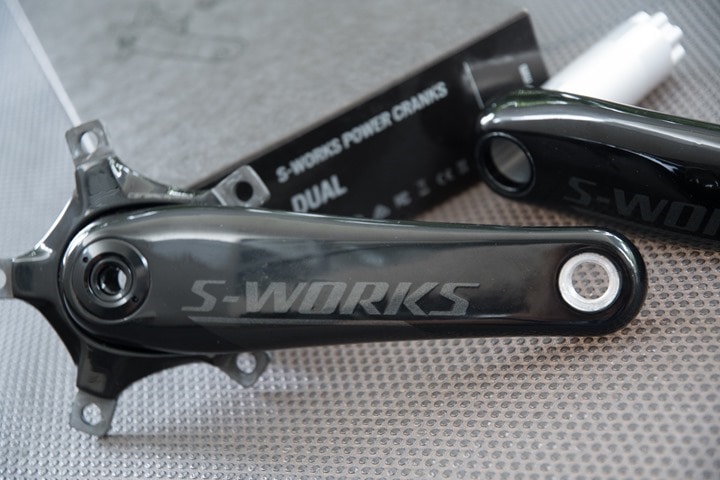
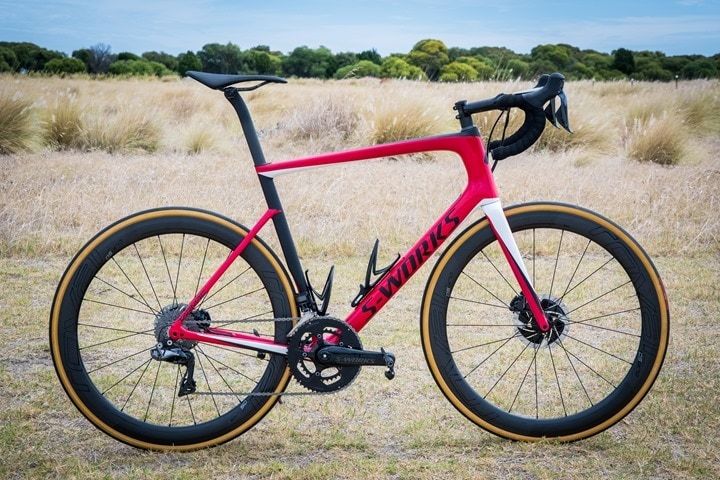

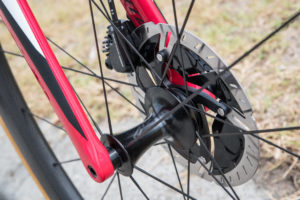
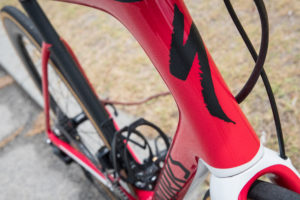
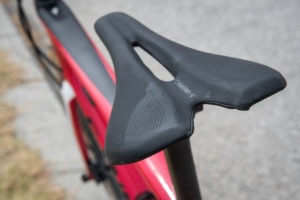
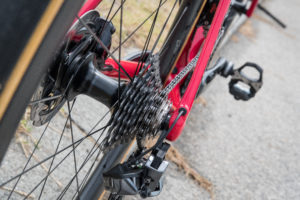

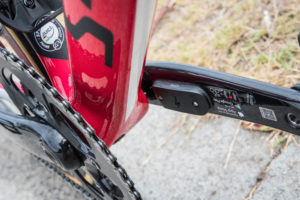
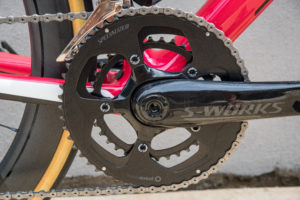
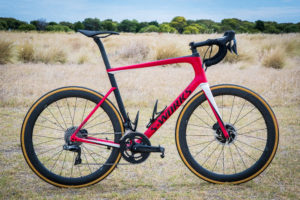
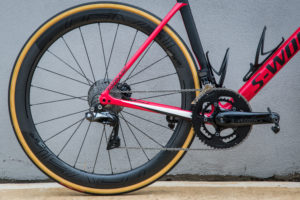

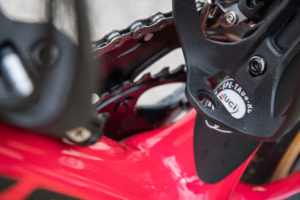
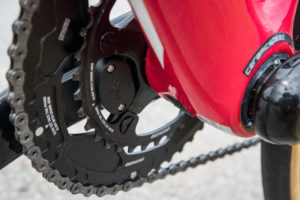

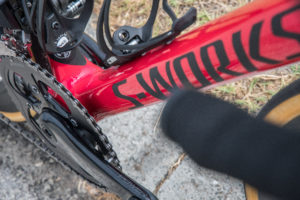
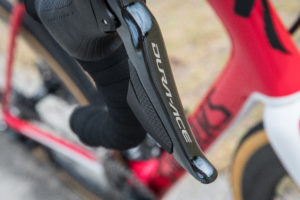
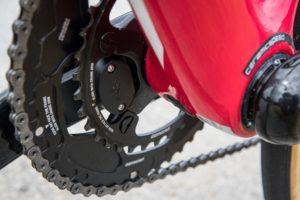
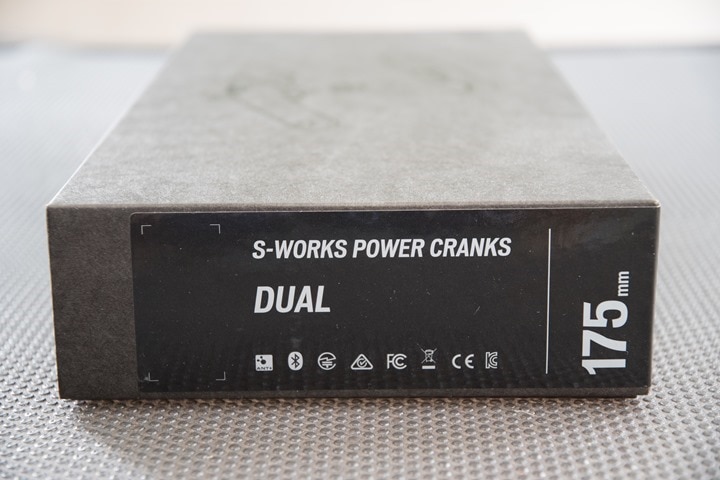
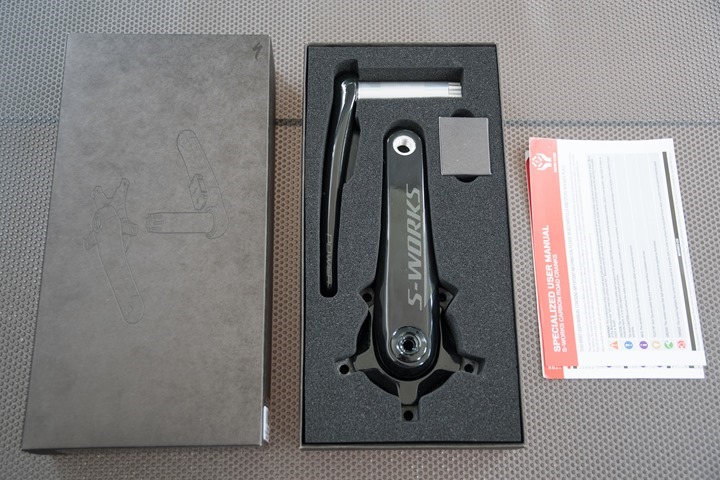
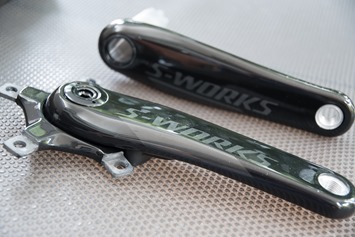

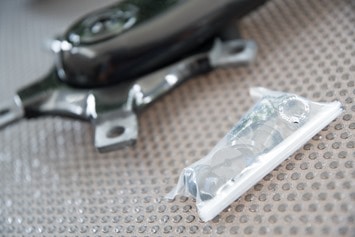
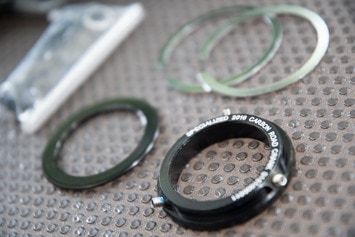
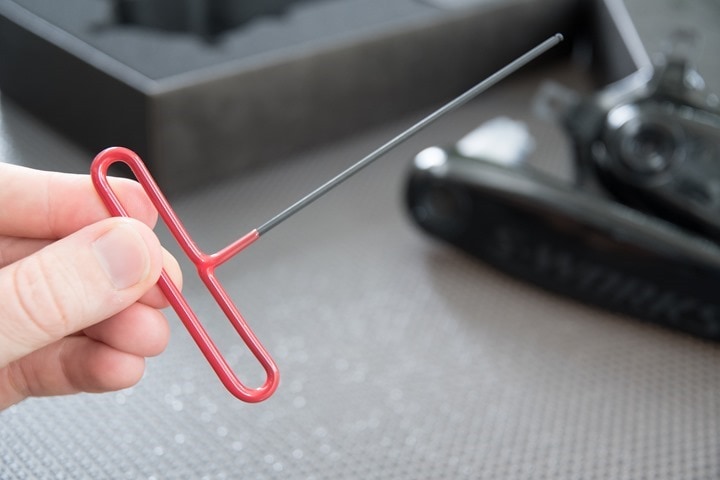
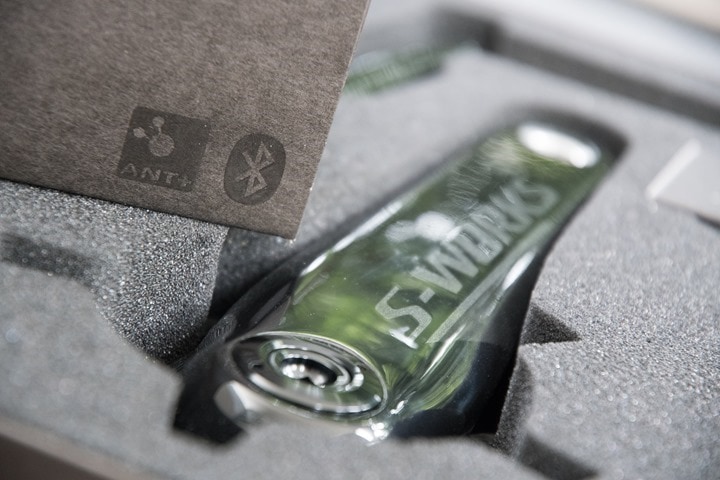
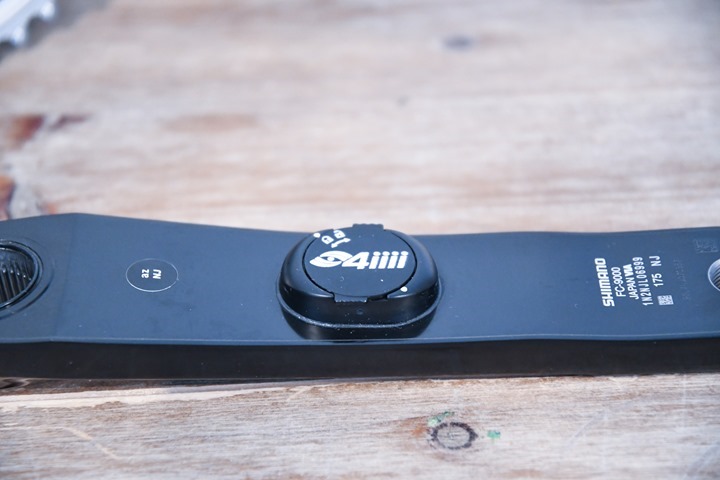
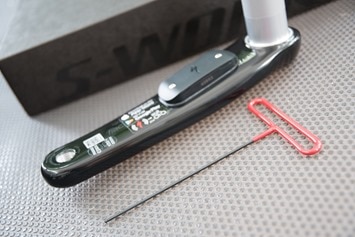
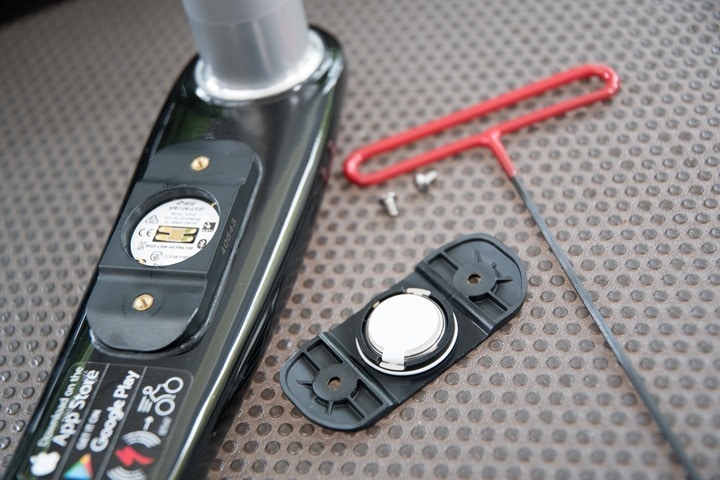
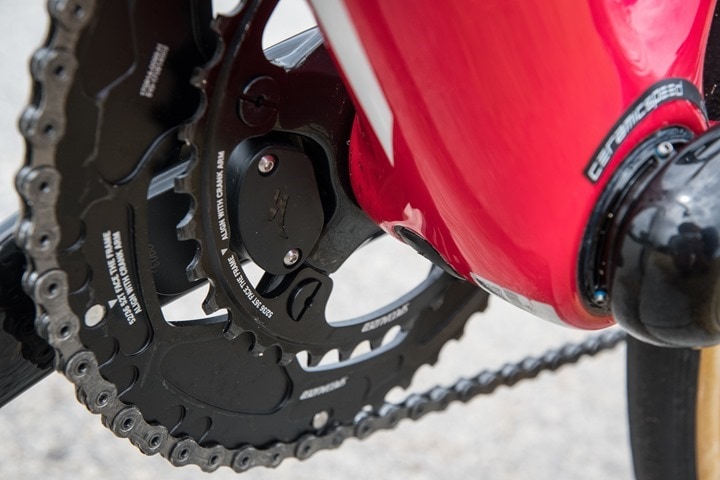
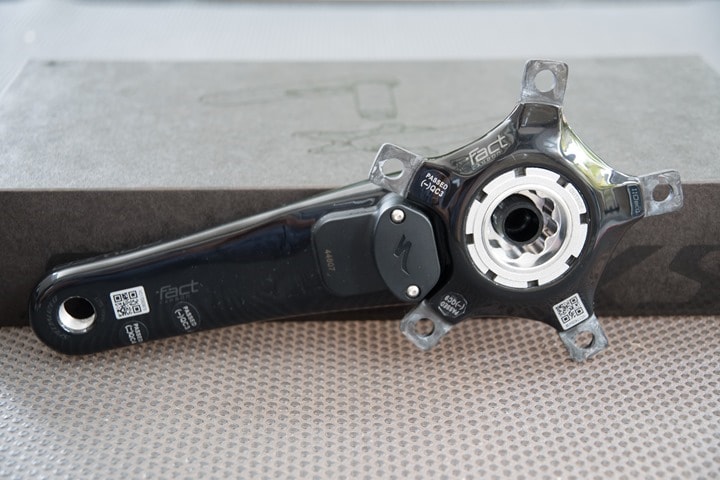
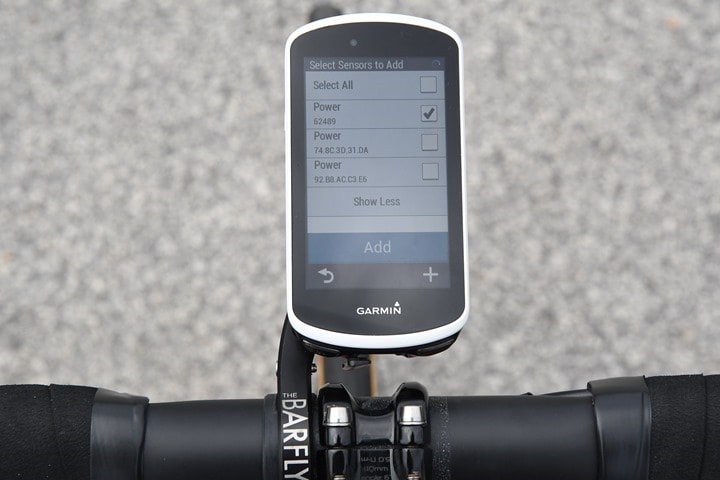
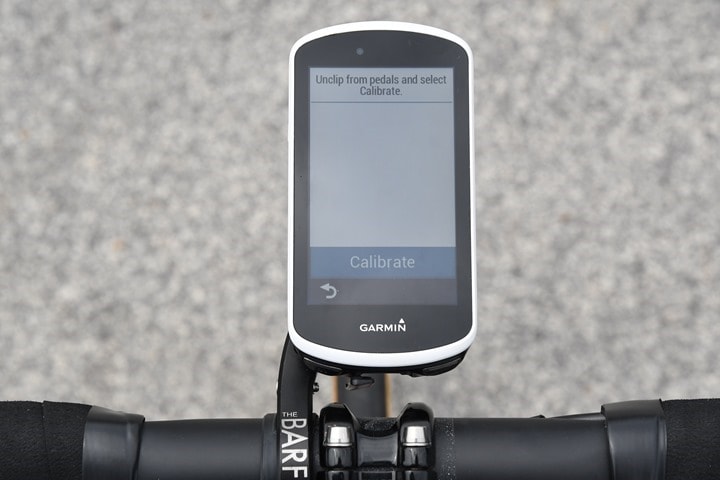

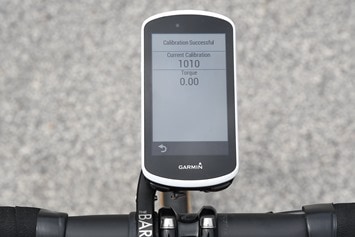
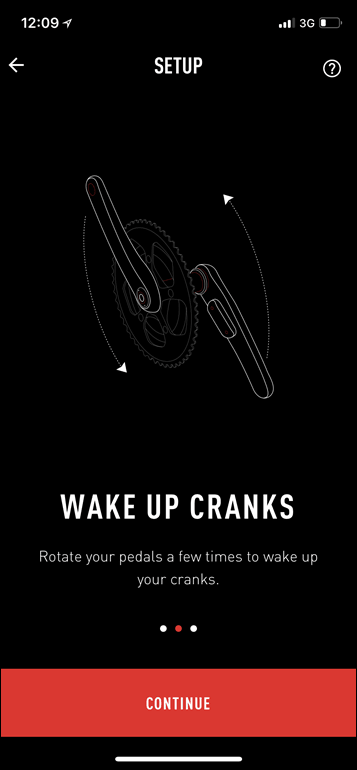
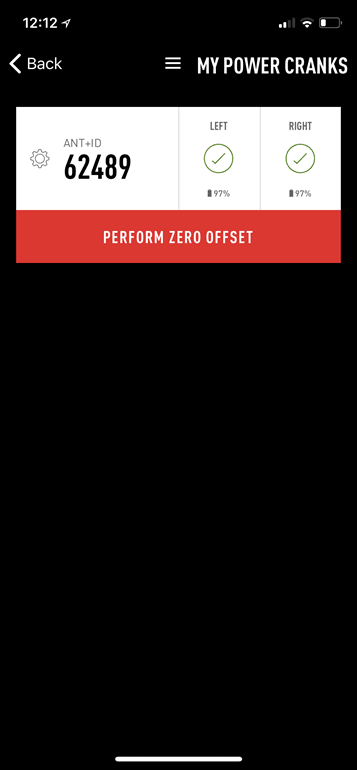
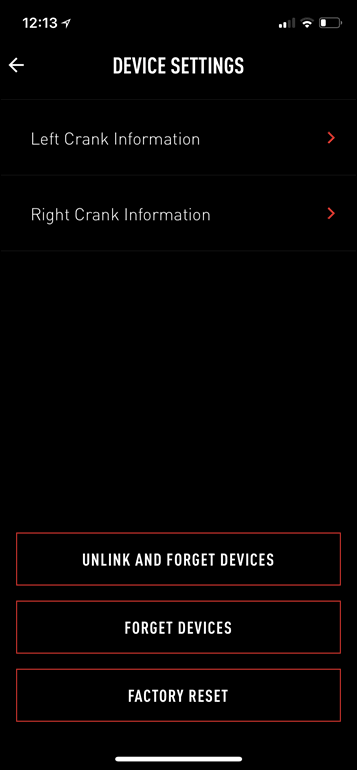

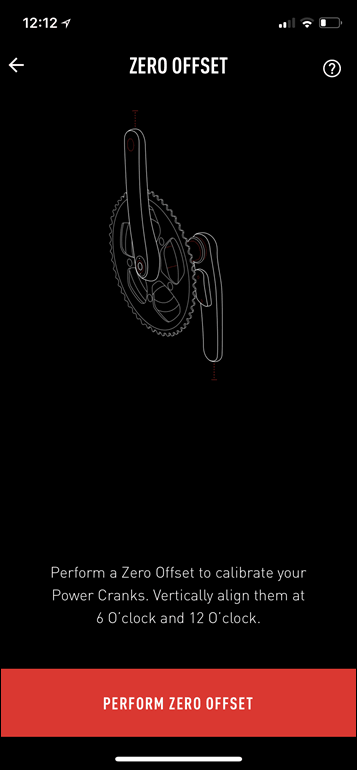
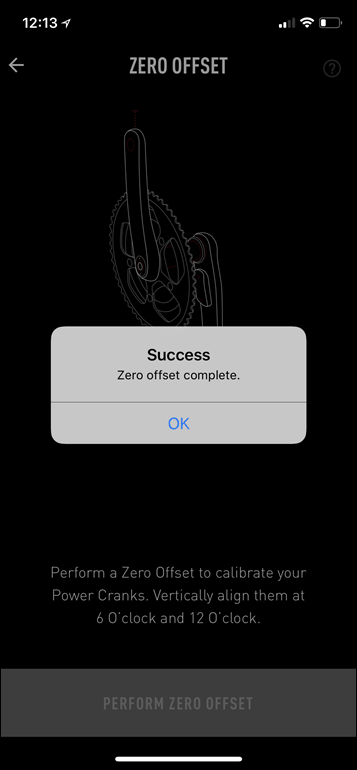
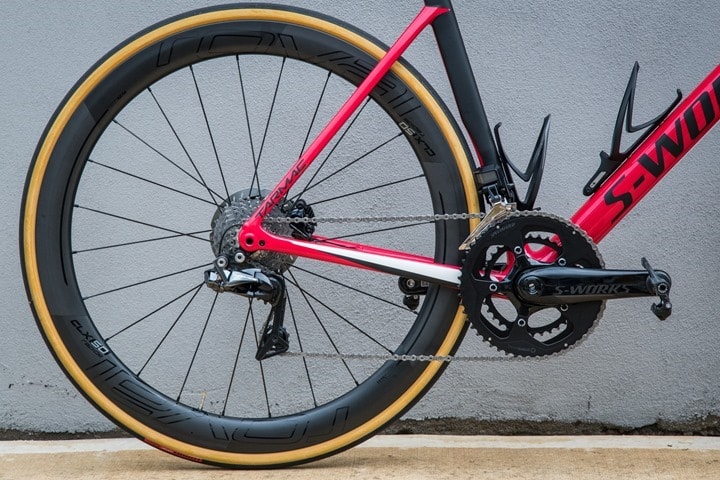



















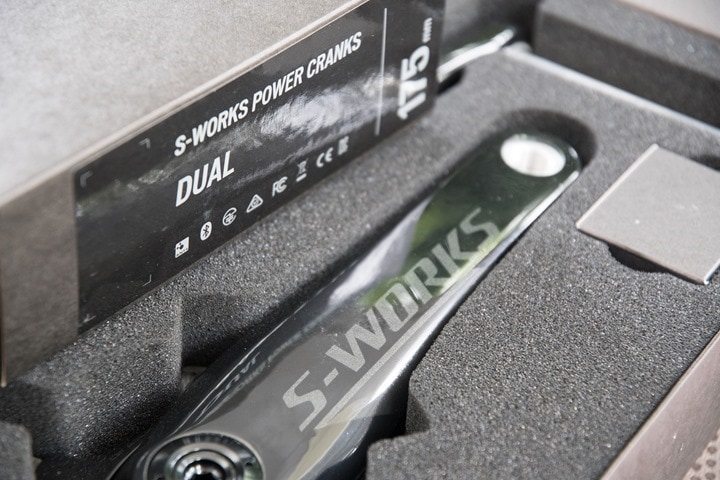





















I wonder what the people who made the original Power Cranks will think of the “Specialized Power Cranks”?
It’s funny, that was my very first thought when I heard the name about a year ago. They said essentially not to worry about, which means that they’ve likely done their research and either come to some agreement there with the original Power Cranks, or, they’ve decided from a legal perspective there’s no specific overlap in naming.
We shall see if this is the case.
I was just thinking the same thing. Very different prodects, but they are still both bike cranks.
What size frame was that red Tarmac?
A 61cm.
Please explain how they can claim accuracy of +-1%, when clearly from your discussion with the prof, his reference was 2% accuracy.
That’s funny, and something I’ll circle back on. In their marketing materials they claim +/- 1% (as shown in the screenshot). But on the call for regular lab based accuracy they (Specialized) were claiming +/- 1.5% (I went back and listened to the discussion recording). I know they were trying to separate out edge cases (like the 50*C one) from regular cases (everything else). But I agree the 1% piece kinda came out of nowhere relative to the other results.
Of course, I’d caution that compared to every other company I’ve seen, I’d say that what Specialized did from a testing structure standpoint is by far the most impressive.
I think Quarq at one time was advocating for a standardization of testing and these accuracy claims. A shame that didn’t get anywhere.
I’d imagine it’s +-1% when using standard accuracy measurement techniques, like a static weight, and dynamometer, as other companies do, so you can compare results with other companies offerings, and that it’s 2% accuracy under the real world testing conditions they did on the treadmill, which isn’t really comparable to other company’s claims.
I wouldn’t bother trying to help spesh rationalize what I would consider a bogus and unreal claim. It’s more likely they see that SRM and Quarq say 1.5% so they wanted to be “better”in their marketing materials. The fact is, no cyclist will ever see this level of accuracy given their temperature and gear position variation. And there is no info out there to support your contention that the 1% is based on simple weight testing,nor is there any info out there that says this is how other companies determine their marketing numbers. SRM quotes a study done by using an ergometer to support their 1.5% claim. My understanding is that Quarq 1.5% claim includes temperature variation. So we are truly comparing apples to papayas here.
I got a note from them saying the +/- 1.0% was simply a screw-up in the press materials. That somewhat makes sense as all my notes from the call stated +/- 1.5%.
I generally agree that real-world testing puts nobody at the +/- 1.0% level, but that’s incredibly hard to prove. Of course, I also know full well that SRM can’t come close to +/- 1.5% in outdoors testing, but nobody wants to say that. They’d easily fail the Boulder test for temp compensation, since SRM requires stopping and offset to account for it.
word error?
…tiny hex wrench to get that close to the downtown in a rather awkward spot… [downtube]?
Thanks!
I’m in the camp that doesn’t even bother looking at the pricing, accuracy, etc. of single-sided power meters… and with that in mind the pricing and breadth of options offered by Specialized is pretty uncompetitive.
I mean, I get it, it’s Specialized, so they are debuting one of the lightest, most accurate, and most expensive power meters out there. At the same time, though, it’s ridiculous that you only get that accuracy if you’re going for S-Works or Dura-Ace cranks. The 105 left-only power meter is competitive with other left-only power meters, but there are complete power meters at that same price point these days. Sure, the full power meters in that range have compatibility foibles, but so do the left-only options.
Great review. I had a question regarding “Shimano Ultegra left-side only with crank/spider: $500”. I am a bit confused with the spider part since you mention left side only.
Also based on the design/performance. Would you recommend it over a L only 4iiii?
Sorry, removed spider – crank only. Also, I just got a note the final pricing is apparently $525 and not $500.
Do we know the BCD for chainrings (that are not included)?
110 BCD (printed on the spider).
It seems like in some ways this is similar to the new Podiiium from 4iii, but with a coin cell instead of rechargeable. (Both use a hex wrench for instance to access power areas, the installation areas appear to be similar)
I’ve been eyeing the podiiium lately, but waiting for you to get a review out before I go and try it myself ;)
Also interested to know whether the Specialized dual PMs show up as dual power over Bluetooth in Zwift, etc. (vs. doubling the left side.)
So it’s actually interesting in that it shows up as two ID’s in Zwift, but I think it’s doing it properly behind the scenes. That’s because if I single-leg pedal, both ID’s show the proper power.
If I remember correctly from the 4iiii stuff in the past, they were one of the very few (only?) power meters that could fail left or fail right and keep on trucking without you having to re-pair. Fault tolerance of sorts.
Specialized confirmed that the way I noted above for older 4iiii units is also accurate for the Specialized unit. It basically acts in a fault-tolerant failover pair.
Great test as always! According to Specialized must the Powermeter only be used with Specialized/Praxis chainrings 06217-1702 (52/36T) and 06218-1713 (50/34T). Do you have any comments to this?
It would be great if smaller chain rings could be put on this. Praxis was able to squeeze in 48/32 into their Cranks but these chainrings do not fit other cranks.
The accuracy testing in Boulder looks strikingly similar to the testing done earlier in this study: “IJSM Accuracy of Cycling Power Meters against a Mathematical Model of Treadmill Cycling”
link to groups.google.com
Somewhat similiar, yes. However in the Swiss study their treadmill goes downhill, and in the Boulder study the treadmill goes uphill. Also, the Boulder study (or work, rather) tends to account for more variables like the temp shift pieces and such. Still, in talking with the Boulder Dr., he was definitely aware of and respected the Swiss study and noted there’s probably a place for both organizations to refine more of the process around it.
I talked with the Swiss study folks a bit, and appreciate the bulk of their work. I was concerned though that they didn’t actually track which models of things they used. So for example we don’t know whether something is a 2009 Quarq or a 2016 Quarq. Which obviously, makes a massive difference.
Agreed Ray. I think that the larger point of the Swiss study is that it might be more valuable to compare power meters to a “standardized” mathematical model than to each other.
Hi,
I am currently saving up for a new Power Meter, and the Quarq DZero (Aluminium Chassis) is my current favourite.
How does the Specialized one compare price-wise and in terms of compatibility? My Tarmac is running an FSA Gossamer Pro on OSBB… would it be as simple as just swapping out the crankset, or would I have to convert the bottom bracket? Having read the article, it seems like no conversion is necessary. Is that correct?
Bottom line question:
Would it be worth waiting? Or should I just go with the Quarq?
Thanks in advance!
Thanks for the excellent, as usual, and timely review. Please describe the shifting of the Praxis chainrings on this crank as opposed to that of the Dura Ace chainrings. Also please compare the stiffness of the Specialized Power Crank to the Dura Ace. I know the technology is you bag and you steer away from non-tech but I’d appreciate your impressions.
Man, every time I see a Tarmac SL6 it makes me happier that I ran out and bought a Tarmac “SL5” as soon as I saw the SL6. More efficient, better riding bike aside, the aesthetics just don’t work for me. The ride and speed of the “SL5” float my boat quite nicely. I know everybody else’s mileage varies on matters of aesthetics.
Praxis chainrings are cold-forged and perform on par to stiff Dura Ace and Ultegra. Shifting performance is exceptional with Praxis chainring. In case you haven’t seen this
link to blog.fairwheelbikes.com
Praxis also sell crankset with 4iiii (left side) for only $530 link to praxiscycles.com
Thank you
Praxis are soft as, they flex like hell!
When using SRM with the PC8 headunit, the auto-zero offset feature accounts for temp flux (I believe). Anecdotally, I’ve seen the offset value shift along with the temp from the start of a ride, thru varying climate changes. Is this what I’m seeing Ray? Or is the offset value change related to something else?
That’s the correct understanding, except there’s one key point: The SRM auto zero won’t update unless you stop pedaling for 5 seconds…and that your speed be 0.
So a stoplight would work, but the more important scenario wouldn’t: A climb.
And it’s on a climb (such as a mountain pass) where you see temp drift that’s usually quite significant. With units that have active temp compensation, they’re actively looking at the temp and compensating, even if you don’t zero offset. SRM doesn’t have that.
Hello Ray, if you used SRM, you would know that 10 degrees changes the off set a little close10. And 10 it’s around 2 to 3 watts of error, so even if there’s no time for calibration on PC8 or other GPS unit that makes little mistake
I actually own an SRM. And in fact, on cold morning conditions where the temp shifted rapidly and I didn’t stop pedaling, the SRM was the most incorrect unit.
In fact, there’s even a study showing the SRM on a relatively tame temp increase of 8*C to 21*C drifts by some 5% (so does the PowerTap hub btw). Neither have active temp compensation. link to ncbi.nlm.nih.gov
Ray- when you do use the SRM, do you run it w/ one of their PowerControl units? Curious about this temp shift issue…. have a few monster rides coming this year (140mi w 10,000ft of gain & 50mi w 10,000ft of gain – Letras again), and wondering what I might need to take into consideration w my SRM and PC8 combo. Thanks,
-kellen
No, with other head units, which means I can’t ‘fix’ the data afterwards like you can with a PC. Still an area I don’t understand why Garmin doesn’t record offsets, even Stages does that now. Super useful. Though, honestly I’d rather not try and fix data and have it right to begin with.
The key thing to remember is whether or not the unit has time to zero offset. This older post from Alex (who is very knowledgeable on the matter) describes some of what you need to know: link to alex-cycle.blogspot.com.au
Cheaper than shimano and stages because it doesn’t include chainrings?
Hi Ray,
did you weight the crank?
Just tossed them on a scale, for the 175mm:
Drive side: 230g
ND side: 212g
Note this is not including any sort of spacers or bolts for chainrings, purely what you see in the box above from a crankset standpoint.
Video review to follow?
TBD to be totally honest. I might. Anything in particular you’d like to see in that versus this?
Honestly, it’s mostly just release day excitement on my part. Just put the Boels Dolman frame on back order. I guess if you’ve seen one power meter video you know what it is and where it’s going. Your videos are just so much nicer than everyone else’s!
From this:
“DCR: Most power meters today tend to have issues with temp shifting scenarios, did you test for that?
Dr: Glad you asked, first, we got a crapton of ball bearings, and then we heated them to 50*C. We validated the temperature with an infrared thermometer. Then we moved them to a larger cooler where we submerged the crankset into the cooler to have it reach the 50*C (122*F) temp. Then we quickly attached to the bike. We found initially the power was 4.1% low, but within 10 minute it was within 1.7%.
DCR: Ok, a cooler is kinda impressive. But what about cold?
Dr.: We did the inverse, this time putting them in a freezer validated at 0*C, after temp stabilization we installed crankset in under 2 minutes and then found power was also within 2% within 10 minutes. There were no manual zero offsets.”
Are we take it that Specialized’ PM has active temp compensation similar to Quark?
If it had “Quarq” like active temp compensation, there would be no “stabilization” effect. The correction would be instantaneous and transparent to the user. The describe observation is of almost a 6% variation from room temperature (say 21deg C) to 50 deg C. That’s a big effect. My guess is that they rely on the crank to do some type of equilabrating to temperature and then the strain gauges just follow. Who knows what happens after another 10 minutes? Maybe it goes back. This doesn’t sound very scientific, nor does it sound like they’ve engineered something into the device to compensate.
Two tidbits.
First, my opinion – Quarq, like everyone else, doesn’t actually change instantly. The reason? You don’t want it to. If you’re riding down the street and you hit a random 25m stretch of hot pavement that has a higher temp you don’t want it to shift just because the temp sensor changed for 4 seconds. Why? Because the carbon crank arm likely didn’t change fast enough (kinda like how pool water doesn’t change quickly). So data is always smoothed, even Quarq.
As for the specific question for Specialized, here’s their answer:
“As you probably know or have guessed, the firmware has additional calibration info at the factory to be able to predict the impact of temp changes on the zero-offset value. The effect of changing temperature is highly linear, so we can extrapolate/interpolate with high accuracy. Each pod has a temperature sensor on the circuit board. The reason for the pause during testing is that the firmware will not adjust while the temperature is changing rapidly – only once it reaches quasi steady-state. In the real world, this is fine. But for testing, we have to wait for the temp to settle.”
Finally, note that in the above case, you’re reading two tests back to back (one from 0*C to room temp, and one from 50*C to room temp). I’m not aware of anyone in real-life (or even fake life) that would go from having their bike in a freezer (literally) to a 120*F environment.
I think what they are saying in a different way is that they have built in a time constant to the equation so that the temperature compensation matches the change in the strain gauges that are bonded to the crank or crank spider material. As you say, you don’t want a change in external temps to trigger the compensation immediately, you want it to match the changes in the bulk material of the crank and strain gauges. But if the effect is modelled correctly, the power reading should always be “right” and not wrong because the correction the circuitry applies doesn’t match the actual rate of change of the material. So I still contend that if properly done you should see little or no change in power accuracy during a ride in changing conditions. I think that’s why Quarq tests every crank in an environmental chamber and applies a unique correction to each crank. It sounds like specialized assumes a correction curve and every crank has the same one. But the material properties and strain gauge responses are all a bit different. The assumption that they are all the same has to account for a higher error in practice.
My suspicion here is that if you did the exact same test (heated ball bearings to a Quarq or freezer to outside), and that you measured that power curve over those 10 minutes, you’d probably find the same variances for those first few minutes.
Ray, I was doing a google search for one of your posts and came across this website: link to dcrainmaker.livejournal.com
It appears to have all your posts in their feed. I didn’t know if it was legit so I figured I’d pass it on to you as it could pull from your site visits thus diminishing your google ad revenue.
:-/ Definitely not legit. I’ve put in a request, though I have low hopes of it being removed.
Interesting question. If you look at one of the pics you took when you did that visit to Quarq a few years ago, it shows the temp testing they do. Had a view of the graphical results of response to temperature to verify that the compensation works. Shows a pretty flat response.
Where do you see graphs over time?
Here’s the one I was thinking of.
Gotchya. But the key is that it takes 2.5hrs for the temp sweep to complete. So in the Specialized test they did 0*F to 120*F (split into two tests), each at 10 minutes total sweep time.
Whereas in Quarq they did 0*F to 140*F (in one giant period), over the course of 2.5 hours.
Obviously, different methodologies, but I’d guess that the real-world impact is that both units would react pretty much the same to thermal differences (quick or not). Some day I’ll have a place big enough to test this in real-time. Today is unfortunately not that day.
That would be a cool test. In fact, you could do that as part of the “DCR Power Meter Standardized Testing Methodology”………..:-)
I think this discussion has proven the point that Quarq made years ago….there is no standardized testing available for these devices, in spite of the fact that athletes rely on their precision and accuracy.
Thanks for the discussion, great stuff!
It was a picture of an array of graphs showing the 10000 point calibration check against temp. I will try to find.
What kind of clearance does the crank have compared to other units with crank based pods: Stages, Pioneer, Shimano, etc?
The price of the double is 1500$ not 1150$ according to specialized.com
The $1,500 is for DuraAce, the $1,150 is for the Specialized variant.
Hmmm. Specialized shows $1,500 for the double sided Specialized PM:
link to specialized.com
Weird, I’ll ask. It doesn’t specify that in the press materials, and they sent one minor correction to the pricing info I had above after I published (since it had changed). They didn’t mention anything about the S-Works variant pricing.
Just to circle back on this comment thread – Specialized confirmed a few minutes ago that the $1,500 price for S-Works variant on their website is incorrect, it should be the $1,150 I listed above.
And just to be clear, you don’t get the stock crankset when you go with that add-on at purchase option, right? So while an aftermarket solution like Shimano/Stages might be more expensive, you’ll be able to net off the deal with the sale of your S-Works non-power carbon crankset ($200 on eBay) from your new Tarmac.
Could you say more about “Bluetooth smart power” and “In addition, by tomorrow they’ll be adding in ANT+ Pedal Smoothness & ANT+ Torque Effectiveness via firmware update.” In addition to the question as to whether there is a trademark infringement in the name I have applied for a patent for a method of evaluating pedaling “smoothness” or “balance”. I would be interested in knowing if that is an issue also. Frank – PowerCranks
RE: Bluetooth Smart power
Simply transmitting power over Bluetooth Smart, same as any other power meter on the market
RE: Pedal Smoothness & Torque Effectiveness
These are following the well known/established metrics by ANT+, listed here: link to thisisant.com (They were added 5 years ago in 2013)
RE: Patents and such
That’d be up to lawyer people. Naming aside, I don’t think you’d have any realistic claim on anything they’re doing from a tech standpoint. There’s virtually no crossover there, and they’re doing what every one of the other 15 or so companies in the power meter world are doing in terms of pedaling details and transmission using known ANT+ & Bluetooth Smart standards for those metrics. Just my two cents.
Thanks for that info. IMHO, that is pretty useless info by itself because it only is looking at pedal forces which include a lot of non-muscular input. To get any worthwhile information that data must be manipulated to remove (or minimize) the non-muscular components in order to give feedback as to what the muscles are doing, then one can learn something important regarding muscle balance (smoothness) and efficiency since all the power a bicycle sees comes from the various muscles of the rider used around the entire circle. That is what my patent idea tries to do. I have a researcher looking at this now to see if my ideas have any merit. Data itself is pretty useless unless one knows how to use it to achieve improvements.
I love it!!
Can an existing S-Works crank set be updated with the PM?
No, they can’t add a sensor onto an existing crank set. You’d need to swap it out for a new crankset.
Turns out there is now an option to add a power meter to existing cranks. They were at the Ironman Kona expo. Company is 4iiii. link to 4iiii.com Reasonably priced also.
The accuracy and consistency between power meters is remarkable, all things considered. A really nice option from Specialized. A $1000 upgrade for new purchases seems really reasonable for dual-power. I’d like to know how many people choose the upgrade.
And that Tarmac disc looks amazing.
The webside tells a price for 1500 $.
Specialized confirmed a few minutes ago that the $1,500 price for S-Works variant on their website is incorrect, it should be the $1,150 I listed above.
I am sceptic. In Germany rumours say 1800 EUR, which is equivalent to 2214 $
Yeah, no real reason for rumors – the prices were all pretty clear in the press materials. Specialized says the website should be updated within 24 hours (of my previous comment…so likely any minute now).
From personal experience, don’t believe them everything. ;-) link to specialized.com
Their site now shows the correct price.
Ray,
Did you get a chance to ask Specialized what they think of non round chain rings with their crankset ?
Is that a scenario they also tested ?
Do you know what crank arm lengths are available for this product & also can this be compatible with a MTB.
hi Ray
I notice you first question to Dr. Kram about the drivetrain loss, and he replies they invert the power equation using a known drivetrain loss value of – 1.02%.
So, this means the power crank already takes in consideration the drivetrain loss and substract this percentage to the power value? If that’s the case, the power should read 2-4% less than a pedal power meter?
can you please elaborate?
Thanks
Guillermo
In this case, remember they’re working to understand the power output from the treadmill to the crankset. Not the other way around.
Have you had any exposure to the Dura Ace cranks with Specialized Power Meter (the one on Specialized.com for $1,500)? If so, do you expect similar performance to the S-Works Power Cranks (the one on Specialized.com for $1,150 w/o chainrings) reviewed here?
The electronics appear similar with only the crank different. Thus, I somewhat expect the DA to be slightly more accurate or at least more consistent due to the material difference and 4iiii’s experience with DA aluminum cranks.
I haven’t touched a DA one.
I’d expect similar performance, but you can never be 100% certain unless one has tested it. Sorry!
Thanks for your quick response. Even though this one doesn’t tick all my boxes (don’t like replaceable batteries and separate wireless. Data transmission), it’s close, doesn’t need a frame magnet and apparently more accurate than a Shimano FC-R9100P. I’ll have to keep choosing between the muddy feel of a PowerTap hub and its power data or the directness of my DT Swiss hubs without power until my LBS can obtain either the Shimano or Specialized/Shimano.
I know, most don’t have a complaint about PowerTap hubs but I feel a bit of muddiness or spool/spin up in them as opposed to non-PowerTap hubs. It’s not as bad since upgrading my Power tap SL+ to a G3 torque tube and then to ceramic bearing but the muddiness is still there.
Even though I go through my LBS for mechanicals like power hubs and cranks, I’ll go ad-free on DCR within the month and checkout Clever Training for my other bike electronics needs, like a Garmin 1030.
Thank for all of your awesomely detailed reviews. Please keep ‘em coming!
Have you been able to test the specialized Dura Ace model? I am curious if that crank will experience the same accuracy issues you described in the Shimano power meter review and the 4iiii dura ace power meter. Searching for a power meter now and tempted by the specialized although nervous that they are discontinuing the model. I look forward to your thoughts. Thank you
I noticed this on Specialized’s web page for Power Cranks:
“Use only with Specialized/Praxis chainrings 06217-1702 (52/36T) and 06218-1713 (50/34T).”
Really? That makes for a challenging ‘cross set up. What would happen if you used 46/36?
Looks like Specialized has removed the S-Works crank from the power meter page:
https://www.specialized.com/us/en/equipment/bike-extras/power-meters–computers/c/computers
Not even “out of stock” – just gone. Any ideas on what’s going on?
Well, it looks like the Power Cranks are back on the Specialized web site and they’ve shown “out of stock” for months:
link to specialized.com
I’ve heard that Specialized might be exiting the crank business. This might make sense as nearly all the non-PM cranks have been/are out of stock as well.
Does anyone have had disconneced problem with Garmin 1030 and Specialized Power Cranks. I sometimes with my new Venge have had this problem. I try to set garmin to use “intellingent recording” and not one second redording data and I see that this is useful. I try to move garmin closer to power cranck and this seems to work.
Just to Know if someonelse still have this issue.
Tks
Hi,
same problem here. I have a sworks tarmac SL6, Garmin 1030 and Sworks power meter. It is replacing a Power2Max NG (not ECO) and I’m experiencing signal losses.
Nothing really serious for the final result, these last some seconds (never counted them but I’d say 5-6, definitely something more than a fraction of time like 1-2 seconds) and I notice it few times every ride.
I don’t have a pile of rides, just 4-5 rides including those on the trainers, I might need to collect some more cases, but I’d tend to say they are more frequent on the trainer (i.e. the circumstance in which I have more wireless signals that could create interferences).
I experienced them also with Stages (had various Stages for 2-3 years), while with P2M they are not existing (I have P2M also on the MTB).
I concluded that problem is due to a slightly poor signal from the Sworks PM, but I’ll do more tests as I was not willing to remove it right away just because of this.
I am a little confused on how the pairing works. When I paired to my Garmin 935, it shows two ANT+ IDs and I connect to both of them. Seems odd, but I went with it.
When I pair the Garmin Edge 520 Plus, it pairs them both but constantly gives me a message that says “Multiple Power Meters Found, Should I switch to [the other one]”. So, essentially it will NOT connect to both at the same time.
One of these must be wrong and I am not sure what to do about it.
Paul,
In case you haven’t figured it out yet;
Use the S-Power app to pair the two sides as a Dual-sided power meter.
Use only the Non-Drive Side ANT+ID as the primary with which to pair your head unit with.
Cheers,
Kristjan
I have the following issue. When my cadence is over 92 rpm it drops out. On display I see zero watts and zero cadence. After a few seconds and under 90 rpm it works good! I have tried on an edge 510 and edge 820. Calibration and pairing ok!
any idea where i can order that tool?
Ray – not kidding i had a hell of a time trying to access the power meter battery cap.
I gave up and went to the shop.
Thus said when the battery dies there is only one battery that requires a change? Nothing on the other arm?
Hi Gabe,
The tool comes with the power meter (regardless of whether you purchased a complete S-Works bike or power meter on its own). Your Specialized Dealer will be able to help.
On the dual sided power meters there is a battery in each crank arm.
Hope this helps.
Great review Ray.
How do you think about dual vs. one sided power meters? It doesn’t seem like there is a lot to get out dual sided at the moment. What are the largest things I would be missing out on if I waited for the single sided s-works power crank and saved a few pennies along the way?
Thanks!
I have this dual sided power meter from Specialized, it came with my 2019 Sworks Venge. The power meter works great and pairs easy, the app is very easy to navigate and set up. The carbon cranks are very light. I do notice when I use these as a power meter inside Zwift and pair my 2018 kickr as power trainer the power drops at 48 minutes into the ride, the signal gets lost. I have to unpair and re pair the cranks inside Zwift to get it to work, I have the Tacx ANT antenna with USB extension cord running to the bottom bracket to make sure the signal is not lost but same thing happens every ride on Zwift. Very frustrating when you crest your KOM hill or climb Alpe De Zwift at turn 9 and the power is dropped costing you your best PR. I will have to try to pair the cranks to the Zwift app and use Bluetooth. The reason why I use the power cranks instead of Kickr is due to the real pain in the arse of calibrating the Kickr inside Zwift plus the integrated cadence is nice in the crank arms.
Hi Tony, tomorrow I am going to change my power meter with a new one that arrived to my dealer. I hope to solve this issue with this one. I don’t use it on Zwift . I use directly the power meter of my trainer Elite Direto on Zwift and It works not bad. I will write on this forum to let you know if there will be drops out. Bye
Yesterday I tried my new power meter specialized and in four hours I had only a drop out for 2-3 seconds, it lost signal, I have a garmin Edge 820. I have no issue with this new one it seems working good.
Did you solve the problem of the signal losing?
I bought a brand new tarmac disc one month ago and I noticed some signal losing: when I’m on the road sometimes I read a zero value on the power and cadance fields; when I’m on my home trainer (Elite Direto) doing some Trainerroad workout, the workout sometimes it stops due to signal losing (no signal both on my Garmin and on the PC screen)
I noticed signal losing sometimes but very rarely. I don’t use it on the elite direto because I use another bike and the power meter inside the Direto. If you notice several drops out maybe it’s a defective power meter or a connection error with the Garmin.
I had a different issue with my old power meter. Always It had drops out above 90 rpm, with this new one I had no issue It works fine.
Hi, thank you very much for your review.
One question, in the dual model, is it possible to see both powers, right and left in a Garmin 1000. I am trying to connect both cranks and I do not know how to do that. When I connect one I miss the other one.
I can see both’s in the specialized app.
Thanks in advance for your help.
hi, you should connect only the left side that is the master one; the right side sends only data to the left side. On the specialized app you should read the ant+code to link to your garmin that is the ant+ of the left crank.
I am considering purchase of this PM. Do you mean you have to concurrently run some kind of iPhone app as well as the Garmin?
Not concurrently. Just once at setup.
Hi Ray,
I bought a brand new Tarmac disc one month ago and I noticed some signal losing: when I’m on the road sometimes I read a zero value on the power and cadance fields; when I’m on my home trainer (Elite Direto) doing some Trainerroad workout, the workout sometimes it stops due to signal losing (no signal both on my Garmin and on the PC screen).
Did you noticed, during you test, a situation Like as I described?
M
No, I didn’t see any dropouts at all from the Specialized unit.
Hi Mirco,
I have the exact same issue, but I don’t use the powercranks signal to use it the Direto though. I try to analize then At home the dropout, but its kida hard to identify the dropouts in the graphics from the time I’m just not pedaling.
I have thought on installing an additional cadence meter in order to identfy the events more easily..
The power crank app links the two sensors and I connect to the Proper ID on my head unit but my Garmin 520 doesn’t show dual sided power. Balance is 0% left 100% right. Is the 520 not compatible to show dual sided? Will only certain dual sided power meters show on the 520?
Hi,
what other chainrings are compatible with the new S-work Cranks and Dual Powermeter.
I tried some others and they didnt fit.
Also did you ride them including the Praxis Works Chainrings? What is your feedback?
Hi Rainmaker
Thanks for the review. I just got this PM on the new works shiv and I am trying to pair it to my Garmin 520 and I have to select one of the sensors because one reads power and the other one does not. As a matter of fact, I only get one sided pedaling data, not the two. I am pairing it right? Thanks!
I have this powewrmeter wil it work with the wahoo element roam?
I LOVE how predictable S-Works Power Cranks have been but the left / right balance makes me scratch my head a little. In the past with dual sided units, I monitored my balance for a week or two and kind of stopped looking at it since I’ve always had 49/51 or 50/50. With S-works, when I pedal with left only or right only, I still get 40%-50% readings from the pedal that’s unclipped. I’m also getting 46%-54% readings consistently on my rides. Nothing has changed. No injuries, no different bike fit. I don’t know why the discrepancy.
Despite all of that though the final number that the unit displays seems very accurate, predictable and repeatable. When I average 3-5 watts more on a climb, I get predictably faster times etc.
So I’m a little puzzled.
I purchased a new Sworks Tarmac last week and have had serious troubles with power numbers and cadence dropping out, as well as huge spikes. It’s happening about 20-30 times per ride. I’ve tried all the troubleshooting options like updating firmware, replacing batteries, factory resets (on both power cranks and Garmin head unit). lots of zero offsets. I’ve been using the Garmin Vectors for years and never had any issues with dropouts or accuracy swings like this! I’m also getting wild readings on L/R balance (for years I’ve been very close to a 50/50 rider). Compared the readouts to my TACX power meter at a consistent tempo (which is usually very reliable and within range of the Vectors) – it just shows the Specialized power cranks are doing crazy things. I think it might be a defective unit. Any help appreciated!
Hey Marcus! I’m afraid there’s no solution to the L/R balance and it’s an inherit problem with these cranks. Too many people with same issue to call it bad luck. Cranks for me still have been VERY predictable and “accurate” in relation to themselves but L/R balance has always been off. At this point I believe one of the meters is off by a margin and it’s always off by the same margin so for training purposes, it’s not a big issue.
However I have never ever experienced with cadence drop outs or spikes or anything like that. It seems like your unit is definitely faulty. You should contact the shop you bought it from (unless you bought used) or the person you bought it from to see if they can help you send it back for a warranty claim.
Good luck!
Same “problem” here.
By joke I tested the balance yesterday by unclipping one pedal at a time. When I pedal with right leg only it reads 0%-100%, but when I pedal with left leg only it reads 95%-5% roughly.
I also tested how the two units work when not connected one another but as standalone power meters. I removed the dual sided PM from the Garmin, I disjoined the two cranks with the Specy app, then I paired the left side sensor only (by adding the ID manually into the garmin) for a couple of minutes, removed it and done the same with the other sensor.
At the end of the day the right side was reading significantly higher (I believe more than 10W out of a resistance set in the Direto of 180 or 190W).
I contacted the Specialized support to see how they react to this notification.
Keep you guys informed.
thanks
Luca
Just to report I see the same issue, always been 49/51 if not 50/50 and these seem to hover around 45/55 and even 43/57 for me.
I have same issue has you down on this I have escalate to wahoo but I don’t know what I can do more have you found any solution?
Good evening, would it be possible to know the tightening torque of the meter? Thanks
Which ones?
how i check for the latest firmware and how i update it?the android application of specialized dosent have any section for update!!i have the same drops of power and cadence my firmware is 4.0.0
Hi DC. I want to service my S-Works power crank in the offseason and I can`t find the user manual online. The only one I can find is the old non-power version with the axle that splits in the middle. Problem is I had it installed at the bike shop and I forgot to ask for the manual. I see on one of your picture that you have it in the box. Is there anyway you could get me the pdf file or a picture of the user manual so I know the bit size, torque spec, grease and loctite spec?
Thanks.
Patrice.
Montréal, Québec, Canada.
Hi Patrice-
I think I found it here: link to media.specialized.com (both English and French).
It was kinda wonky on Specialized’s site, as I got a few errors – but let me know if that’s what you’re looking for.
Cheers!
Are the powercranks compatible with Garmin 1030 (ant) together with polar vantage (blue tooth) ?
Yes, it concurrently transmits.
Hi Ray.
I am considering buying the left only specialized powermeter. But I cannot find any information online about the depth of the pod. I have about 10 mm of clerance between my crank-arm and the bike-frame.
Do you know where I can find information about the dimenstions of the pod installed on the Specialized Power Crank?
Thanks, Jens Due
Jens – there is no data!
I just returned mine as the pod is so long it hits all of my chain-stays !
Spesh dropped the ball big time and that is why they are cheaper than the 4iii right now.
Just buy the 4iii – that will fot with 10mm clearance in the middle of the arm.
Hi to all! I ve bought the dual power cranks for my s-works tarmac which I have pair with my 1030. A lot of drop outs and disconnections some times even for a minute. At least 5-10 times per ride. I ve contact to specialized and they told me that this maybe is problem from my garmin and some other “ideas”. Does anyone have found a way to make the cranks to work as a 1400$ power meter, flawless???
This week I’ll replace (under warranty) my third S-works power cranck for the problem you described. Together with my reseller we decided for the last chance before change PM. During the last year, since I bought my Tarmac, I also used 3 different Garmin Edge 1030 (warranty substitutions) an Edge 800, Fenix 5 and TrainerRoad PC app; in any case PM drops out and suffer disconnections.
Before Specialized PM, I used for an year a Power2Max NGeco without any kind of problem with the same devices.
Thanks for the info. I have in my hands a wahoo elemnt bolt and i am gonna give it a try just to confirm that the problem starts from the crank and not from the 1030. If it has the same issues i am sending them back for warranty claim.
Is there any documentation out of the latest current firmware version ? My iPhone app reports 2.9.0 and doesn’t prompt for an upgrade but can’t find any info out there as to what the latest version is?
In my iphone app shows firmware 4.00
This will not fit some frames – pay particular attention those of you with carbon framed disc models, or gravel bikes with larger wheel clearances. Epic FAIl on the Orbea and the Fuji for me so sent it right back…
Hi guys,
I have an issue with the BT connection of the sworks power to the Garmin: when I search for power meters the Edge 1030 simply doesn’t see the Sworks BT power meter. It sees it as Ant+, it sees the Direto BT power, but not the sworks.
But BT is working because I can connect the Sworks power to the app (android), and also when I turn on zwift and I search for Power Meters, Zwift sees both the Sworks Power as ANT and as BT.
Am I missing something here or is there something not working properly?
thanks
Luca
Hello, I just bought a used Dura Ace Duel sided power crank and I’m having issues. I see both sides in the Specialized app, I can sync both sides together but every time I try to zero offset it fails. The left side seems to offset just fine by itself, if i try to single setup the right side I get the same error. I tried offsetting with my Garmin 520 and got a error “1020”. So I think that means it can calibrate the left side but not the right. I’ve tried factory resetting, forgetting devices and re-syncing and no matter what I do the right side won’t work. I guess this is what I get for buying used. Super bummed.. Anyone have issues like this?
After taking the plunge and purchasing a 2019 S Works Venge, I was curious to read about the performance of the PM. I’m glad to read that it appears to be a worthwhile addition to the bike.
Excellent in depth write up as expected. Many thanks.
I have it, and I’ve had various stages, p2max and quarq, and I suggest a single source, cracks based option.
Two sides per measurements means twice the chances of having issues, half accuracy, and what you get in turn is a dual power reading trust you don’t know how to use.
Suggest p2max over all of them with a great preference: it really simply works day in day out, repeatable. And I suggest the ngeco to have the app connection, and best p/q ratio
Ciao
Luca
Hej Rainmaker, and thanks for a really nice review. After this review I decided to buy the s-works Dual power-meter cranks for my new S-works Venge just before Christmas.
All works fine but when riding outdoors together with a friend who has a similar body-weight and bike. He uses Assioma Dual power-meter Pedals and when we ride next to eachother at the same speed his readings iare 15-20w higher then mine. We noticed numbers were odd because on stravasegments and from analyzing transgressions he would always put out way more power then in reality it should be much much closer.
Do assiomas tend to read high numbers or do 4iiii read low? According to your numbers it should be like no difference between these two.
I have latest firmware and always calibrate 10min into a ride.
It does not really matter I guess as long as numbers are consistent to me, but I admin it is a bit annoying in wintertime when you ride on zwift knowing you have low readings :)
Hi my wahoo roam keeps reading incorrect data for dual specialized power meter
Do you have the same problem when testing it?
many thanks
here is the case:
link to support.wahoofitness.com
Excellent review – thanks! I purchased the s-works meter after reading and have not been disappointed. However, I recently upgraded my Garmin 520 to a 530, and for some reason it will not pair with the 530. It worked great (and still does) with the 520 and I reset it with the iOS app (still pairs fine and calibrates). The new Garmin 530 pairs with the rest of my kit (Garmin speed sensor, Garmin heart rate, and Garmin radar all work fine). I think you may have paired more Garmin devices with more sensors and power meters than anyone on the planet… if there is not an obvious answer, do you have any suggestions for what sequence to “reset” things in to resolve this? Should I remove the batteries from the power meter, or factory reset the Garmin unit (and redo all of the settings), or???
I get that you can’t be tech support for everyone’s problems, but if there is a more general learning about the order to reset things in or if the S-works or Garmin stack is finicky about being paired twice, I’d welcome a response. Thanks again.
Hi great review but as an after market product I couldn’t find any detail on the bottom bracket compatibility with other frames or bottom brackets. Specialized are renowned for marking products that cannot be matched.(the SL5 disc with the rear wheel hub is a classic example) .
In this case I cant find any mention spindle length for this product which this along side the performance is pretty important information. FYI previous specialized spindles lengths have been 61mm when industry sits at 68mm +. would love to know if you could still provide any details on this
cheers
So today I had some strange readings from my power cranks, so I thought i would change the batteries. It turns out the right (chainring side) is coming unglued. On this side the chainrings protect the meter so it can’t have had an impact.
Anyway, issue now raised with specialized so hopefully they will be replaced quickly (18 months old).
Anyone else ever had this issue?
I just have this exact same problem.. it looks like the LHS has de-lamination issue… I can see the circuitry from the side. This de-lamination happened when I was trying to cap back after changing battery.
Hi Guys,
I use the specialized power cranks with a Garmin edge 830. Every 10 or 20 kilometer the connection between these two is gone for a few seconds. Does anaybody know what’s happening and how I could solve this problem? Thank you!
Lars
Guess a different garmin mount or positioning on the handlebar (more angled up or downwards) could help a bit as it seems like a signal issue.
I had problems like that with the Stages, and not so frequent but similar also with Specy power cranks. I also have some dropouts with P2M and with ASSIOMA (and more rarely also with Di2 and Varia radar) so don’t expect that you’ll ever solve it once for all. Probably the receiver in the Garmin devices is not the best one (I have a edge 1030), but I have never had the chance to seriously test receiving signal with Wahoo, Stages Dash or anything else so I can’t confirm 100%: maybe it ‘s just how these connections go.
ciao
Luca
Thank you very much for your comment Luca!
Ciao,
Lars
Hallo, I have used since 2018 this powermeter and now I have an issue with the right side. I think it is related to the contacts with the battery, I have tried to lift up the contacts but things don’t change. Both Edge 830 and the app don’t see the right side. Actually I am using only the left. Some advice? Thanks.
I’ve been having similar issues but with the left side. Ever since I switched to the 4iiii app around August and updated the firmware the left side has a poor connection, before/during/after rides. I’ve replaced the battery several times, verified with a voltmeter that the batteries are good, and I either get no connection or when it connects it will show 50% battery life. The right side shows 100%. I’ve tried prying up the contacts very gently to see if that would help but it has not. Even if the power meter connects before the ride it will lose connection several times during the ride. I never had any issues in the 3 years before using the power meter.
Interestingly, reading Ray’s review of the Garmin Rally pedals he mentions having a connection issue with the right side 4iiii power meter on his mountain bike. Wondering if this is related? Maybe a firmware issue with how it’s managing power from the battery.
Same here. Happy customer since 2018. Right side has not been responding for a few months. Left side works fine. Seems like the “dual” part is defunct. Not happy with such an expensive powermeter to stop working after 3 years.
I hope Specialized will offer good customer service.
I had the same with the metal connections on the side inside the right side after poking around a bit on them and refitting over and over again it works. Every battery replacement it’s the same issue..
I’ve just had the unfortunate experience of the 4iiii PM pod coming completely off the drive side crank arm and is literally hanging by the strain gauge. Are you aware of other similar failures? It appears that the PM pod on the drive side is only glued. You don’t mention this in your review but could this be correct? This appears to be a significant oversight on the design for an area that would experience a lot of vibration over time.